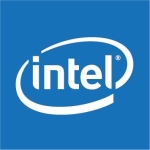Dell PowerEdge Rack Servers have demonstrably simplified a multitude of IT processes, transforming what could be intricate configurations into exercises of remarkable expediency. This newfound ease is further amplified by the seamless integration between PowerEdge and VMware, fostering a user experience characterized by intuitive clarity and straightforward execution.
The Dell EMC PowerEdge Rack Server's robust Cyber Resilient Architecture framework has demonstrably bolstered our organization's cybersecurity posture, proving itself an effective solution for mitigating and recovering from cyber threats.
The Dell PowerEdge Rack Servers shine in terms of energy efficiency, dynamically adapting their power draw to match workload demands. However, my current data pool for comparative analysis is somewhat limited.
Managing the ever-shifting demands of high-performance workloads isn't an insurmountable challenge with Dell PowerEdge servers. The true differentiator lies in the scale of operation: from compact, nimble servers to robust, expansive workhorses, the PowerEdge portfolio offers adaptability across the entire spectrum. This comprehensive array ensures that, regardless of our needs, we'll find the ideal configuration for our specific processing tasks. Moreover, Dell operates as an invaluable partner, readily equipped to identify and deliver the perfect PowerEdge solution to seamlessly tackle our evolving computational requirements.
By leveraging the advanced capabilities of Dell PowerEdge Rack Servers, I am empowered to meticulously track and analyze their energy consumption. This oversight allows me to generate detailed reports and actionable insights, readily available to be disseminated to the sustainability department, or any other stakeholder requesting such data.
Thanks to our robust high availability architecture, meticulously crafted with VMware's leading virtualization capabilities and the unparalleled reliability of Dell PowerEdge Rack Servers, we've experienced an immaculate track record of zero production downtime. This means our critical operations consistently run like clockwork, uninterrupted by unexpected outages, ensuring seamless service delivery for our valued customers and fostering an environment of uninterrupted productivity.
The implementation of the Open Management Console has demonstrably enhanced the operational efficiency of our IT team by streamlining and reducing the volume of administrative tasks they previously undertook. This has resulted in a significant optimization of their workflow, freeing up valuable resources for them to focus on more strategic initiatives.
While I would rate Dell PowerEdge Rack Servers an eight out of ten, the intricacies involved in pre-configuring the system leave me yearning for a touch more user-friendliness. The sheer breadth of its capabilities necessitates a certain complexity, a sprawling landscape of options that, at times, can feel overwhelming. It's almost as if the system strives to be a one-size-fits-all solution, encompassing every conceivable need under the sun – an admirable ambition, yet one that occasionally comes at the cost of streamlined user interaction. Ideally, I'd prefer a configuration process that guides the user along a predetermined path, gently navigating through key decisions rather than presenting a daunting open expanse. However, I readily acknowledge that this is largely a matter of personal preference, and the inherent power and flexibility offered by the current system are undeniable. In the grand scheme of things, the configuration complexity isn't a deal-breaker, merely a minor bump in an otherwise smooth and rewarding experience.
The standardization inherent in Dell PowerEdge rack servers significantly enhances the overall operational malleability of our organization. This is primarily due to their ubiquitous compatibility, allowing for unimpeded deployment across diverse locations, as we've already successfully demonstrated. However, while this standardization excels in initial placement, it hasn't been fully tested in terms of intra-operational adaptability. Granted, component failure mitigation remains straightforward, with replacement parts readily dispatched and swiftly configured, ensuring rapid service resumption. Nonetheless, the internal flexibility facilitated by these servers hasn't been extensively explored.
Foreign Language:(German)
Ist Vielseitig, Energiesparend und Macht Unsere IT-Prozesse Einfacher
Was ist unser Hauptanwendungsfall?
Unsere wichtigste Serverlösung sind die Dell PowerEdge Rack Server, die wir für verschiedene Zwecke verwenden. Dank ihrer robusten Funktionen können wir sie als Hypervisor-Plattform einsetzen, vor allem für VMware oder für sichere Datensicherungsvorgänge. Darüber hinaus eignet sich der Server hervorragend zur Bewältigung umfangreicher Speicheranforderungen und kann Bare-Metal-Installationen des Windows-Betriebssystems verarbeiten.
Da wir die Notwendigkeit eines rationalisierten und standardisierten Server-Ökosystems feststellten, entschieden wir uns für die Integration von Dell PowerEdge Rack-Servern und lösten damit die langjährigen Herausforderungen, die mit unterschiedlichen Serverkonfigurationen verbunden sind.
Wie hat es meiner Organisation geholfen?
Dell PowerEdge Rack Servern haben zahlreiche IT-Prozesse deutlich vereinfacht und damit komplizierte Konfigurationen in besonders einfache Abläufe verwandelt. Die nahtlose Integration von PowerEdge und VMware trägt zu dieser Vereinfachung bei und fördert eine Benutzererfahrung, die sich durch intuitive Klarheit und unkomplizierte Ausführung auszeichnet.
Das robuste Cyber Resilient Architecture-Framework des Dell EMC PowerEdge Rack Servern hat die Cybersicherheitslage unseres Unternehmens nachweislich gestärkt und sich als effektive Lösung für die Eindämmung von und die Wiederherstellung nach Cyberbedrohungen erwiesen.
Die Dell PowerEdge Rack Servern zeichnen sich durch ihre Energieeffizienz aus, da sie ihre Leistungsaufnahme dynamisch an die Arbeitslastanforderungen anpassen. Dennoch ist mein aktueller Datenpool für eine vergleichende Analyse etwas begrenzt.
Mit Dell PowerEdge-Servern stellt die Verwaltung der sich ständig ändernden Anforderungen von Hochleistungs-Workloads keine unüberwindbare Herausforderung dar. Das wahre Unterscheidungsmerkmal liegt in der Betriebsskala: Von kompakten, wendigen Servern bis hin zu robusten, umfangreichen Arbeitspferden bietet das PowerEdge-Portfolio Anpassungsfähigkeit über das gesamte Spektrum hinweg. Dieses umfassende Angebot stellt sicher, dass wir unabhängig von unseren Bedürfnissen die ideale Konfiguration für unsere spezifischen Verarbeitungsaufgaben finden. Darüber hinaus agiert Dell als unschätzbarer Partner, der in der Lage ist, die perfekte PowerEdge-Lösung zu finden und zu liefern, um unsere sich entwickelnden Rechenanforderungen nahtlos zu bewältigen.
Durch die Nutzung der fortschrittlichen Funktionen von Dell PowerEdge Rack Servern bin ich in der Lage, den Energieverbrauch genau zu verfolgen und zu analysieren. Diese Übersicht ermöglicht es mir, detaillierte Berichte und umsetzbare Erkenntnisse zu erstellen, die der Nachhaltigkeitsabteilung oder anderen Interessengruppen, die solche Daten anfordern, zur Verfügung gestellt werden können.
Dank unserer robusten Hochverfügbarkeitsarchitektur, die sorgfältig mit den führenden Virtualisierungsfunktionen von VMware und der unvergleichlichen Zuverlässigkeit der Dell PowerEdge Rack Servern entwickelt wurde, haben wir eine makellose Erfolgsbilanz von null Produktionsausfällen erreicht. Das bedeutet, dass unsere kritischen Abläufe stets wie ein Uhrwerk laufen und nicht durch unerwartete Ausfälle unterbrochen werden, was eine nahtlose Servicebereitstellung für unsere geschätzten Kunden gewährleistet und eine Umgebung mit ununterbrochener Produktivität fördert.
Die Implementierung der Open Management Console hat die betriebliche Effizienz unseres IT-Teams nachweislich verbessert, indem sie den Umfang der zuvor durchgeführten Verwaltungsaufgaben rationalisiert und reduziert hat. Dies hat zu einer erheblichen Optimierung ihrer Arbeitsabläufe geführt, wodurch wertvolle Ressourcen freigesetzt wurden, die sie für strategischere Aufgaben einsetzen können.
Was ist am wertvollsten?
Das Hauptmerkmal der Dell PowerEdge Rack Server liegt in ihrer Fähigkeit, als zentraler Mittelpunkt der Serverinfrastruktur zu fungieren. Diese zentrale Plattform orchestriert den Datenfluss und ermöglicht einen nahtlosen Betrieb über alle miteinander verbundenen Komponenten hinweg.
Was muss verbessert werden?
Die Verbesserung der betrieblichen Effizienz von Dell PowerEdge Rack Servern könnte durch die strategische Implementierung einer zentralen, in der Cloud gehosteten Verwaltungskonsole erreicht werden. Eine solche in der Cloud gehostete Plattform würde den Administratoren eine verbesserte Sichtbarkeit und granulare Kontrolle über die gesamte Serverflotte ermöglichen und so die Agilität fördern und die Leistung optimieren.
Wie lange nutze ich die Lösung schon?
Ich habe Dell PowerEdge Rack Server seit etwa 15 Jahren im Einsatz.
Was halte ich von der Stabilität der Lösung?
Wenn es um solide Stabilität geht, sind die Dell PowerEdge Rack Servern eine nahezu perfekte Zehn von Zehn. Doch selbst die robustesten Geräte sind anfällig für gelegentliche Probleme, und wir haben Fälle erlebt, in denen eine SSD unerwartet ausfällt, ein RAID-Controller nicht richtig funktioniert oder ein Akku einen Ausbruch erleidet. Das liegt in der Natur der Sache, schließlich handelt es sich um komplizierte technische Lösungen, die aus zahlreichen, hart arbeitenden mechanischen Komponenten bestehen. Es ist wie mit dem Sprichwort: Selbst die stärkste Eiche verliert ab und zu ein oder zwei Blätter.
Aber das Schöne an Dells proaktivem Ansatz ist, dass das automatische Fehlermeldesystem von Dell sicherstellt, dass wir sofort benachrichtigt werden, wenn eines dieser Probleme auftritt. Es ist schon vorgekommen, dass wir an einem Montagmorgen ins Büro kamen und von einer fröhlichen Mitarbeiterin an der Rezeption mit den Worten begrüßt wurden: "Wissen Sie was? Ein Taxi hat am Samstag um 3 Uhr morgens eine Ersatzfestplatte geliefert!" "Welche Festplatte?", stöhnten wir und sahen uns krampfhaft die Sicherheitsaufzeichnungen an. Wie sich herausstellte, hatte Dell vorsorglich die neue Festplatte bereits zwei Tage zuvor geliefert, ohne dass wir überhaupt etwas mitbekommen hatten.
Was denke ich über die Skalierbarkeit der Lösung?
Die Fähigkeit, Dell PowerEdge Rack Server problemlos zu skalieren, ist zweifellos von großem Vorteil. Der Gedanke an einen Austausch der zentralen Recheneinheiten, dem Herzstück des Systems, wird jedoch nur selten in Erwägung gezogen. Stattdessen steht die Erweiterung des Arbeitsspeichers oder der Speicherkapazität des Systems im Vordergrund. Dieser Ansatz erweist sich als besonders nützlich, wenn wir die Voraussicht haben, die potenziellen Anforderungen des Systems in drei oder sogar fünf Jahren vorauszusehen. Wenn beispielsweise bei der Erstkonfiguration keine Festplatten eingebaut werden, ist eine spätere Erweiterung unmöglich, was eine technische Belastung darstellt und sich sicherlich auch auf die finanzielle Belastung auswirkt.
Wie sind Kundenservice und Support?
Es wäre an der Grenze zur Unwirklichkeit, den technischen Support von Dell mit einer perfekten Zehn zu bewerten, denn dort, wo es keine Ausfälle und Störungen mehr gibt, ist eine nahezu tadellose Neun durchaus angemessen. Die einzige Ansprechstelle, oft ein Callcenter, dient als gut funktionierendes Tor zu einer nahtlosen Lösung. Probleme werden umgehend aufgegriffen und eskalieren schnell in die Bereiche der L2- und L3-Techniker, wo die Zusammenarbeit besonders gut funktioniert. Stellen Sie sich vor: Wir stellen ein Ticket über Speicherprobleme aus, und der zuständige Experte identifiziert das Problem sicher als Serverproblem. Anstatt uns hin und her zu schieben, werden wir nahtlos an einen kompetenten Serverspezialisten weitergeleitet, so dass wir immer auf dem Laufenden bleiben. Das Schöne daran ist, dass sie proaktiv vorgehen und unermüdlich nach Lösungen suchen, ohne unseren Arbeitsablauf zu stören. Natürlich kann es sein, dass wir bei Zugriffsbedarf kontaktiert werden müssen, aber Dells innovative Techniken, sowohl die aktuellen als auch die zukünftigen, sind darauf ausgerichtet, den gesamten Prozess weiter zu rationalisieren und zu standardisieren, was in Zukunft eine noch reibungslosere Abwicklung verspricht.
Wie bewerten Sie den Kundenservice und -support?
Positiv
Welche Lösung habe ich vorher verwendet und warum habe ich gewechselt?
Bevor wir unsere aktuelle Konfiguration vorgenommen haben, haben wir unsere wichtigsten Prozesse mit Servern von Hewlett Packard Enterprise verwaltet. Nach einer gründlichen Evaluierung haben wir jedoch eine strategische Umstellung auf PowerEdge-Rack-Servern von Dell vorgenommen. Diese entschlossene Maßnahme hat unsere Organisation nachweislich verbessert, indem sie eine stabilere und robustere technologische Umgebung geschaffen hat.
Wie war die Ersteinrichtung?
Die anfängliche Bereitstellung verlief unerwartet einfach. Die nahtlose Integration und Vorkonfiguration der Serverkomponenten sowie die vorausschauende Bestellung von VMware direkt beim Hersteller reduzierten den Prozess auf eine Handvoll kleinerer Konfigurationen. Das Ergebnis war, dass das System mühelos zum Leben erwachte. Es war wirklich ein Plug-and-Play-Erlebnis - auspacken, installieren, einschalten, und alles läuft.
Unsere Implementierungsstrategie konzentrierte sich im Allgemeinen auf den Austausch veralteter Servereinheiten. Der Prozess bestand im Wesentlichen aus einer nahtlosen Abfolge von Einsetzen, Installation, Netzwerkanbindung, Aktivierung und einer rudimentären Basiskonfiguration. Dies ermöglichte die anfängliche Außerbetriebnahme der Altserver, die durch die sorgfältige Vorkonfiguration in Zusammenarbeit mit Dell erleichtert wurde. Grundsätzlich lieferten sie das System genau nach unseren Anforderungen.
Wie sieht es mit dem Implementierungsteam aus?
Aufgrund begrenzter Personalressourcen und räumlicher Nähe erwies sich die Zusammenarbeit mit einem Partner als optimale Lösung zur Erleichterung des Implementierungsprozesses. Die Anwesenheit bestimmter Teammitglieder vor Ort war nicht möglich, so dass wir auf das wertvolle Fachwissen und die Fähigkeiten unseres externen Partners nicht verzichten konnten.
Was war unser ROI?
Ich verstehe, dass es frustrierend ist, den Wert unserer Arbeit in konkreten Begriffen wie der monetären Kapitalrendite messen zu wollen, aber manchmal sind die immateriellen Vorteile genauso wichtig, wenn nicht sogar noch wichtiger. Es ist fantastisch, dass die Verwaltung dieser Servern nun deutlich weniger Konzentration von uns verlangt, wodurch wertvolle Zeit für andere Aufgaben freigesetzt wird, die zuvor durch die Komplexität ihrer Verwaltung eingeschränkt waren. Diese spürbare Arbeitserleichterung hat sich nachweislich in einer höheren Zufriedenheit unserer Kollegen niedergeschlagen, was an sich schon für den Erfolg unserer Bemühungen spricht. Auch wenn eine exakt berechnete ROI-Zahl fehlen mag, sind die freigesetzten Ressourcen und die gestiegene Motivation ein eindrucksvoller Beweis für den Wert, den Dell PowerEdge Rack Servern ohne Zweifel bringen.
Welche Erfahrungen habe ich mit den Preisen, den Einrichtungskosten und der Lizenzierung gemacht?
Die Preisgestaltung scheint vergleichsweise günstig zu sein, insbesondere im Rahmen des Projekts. Allerdings sind die Lizenzbedingungen gelegentlich etwas undurchsichtig, so dass ich sie nur schwer nachvollziehen kann. Zur Klärung bin ich oft auf das Fachwissen meines Partners in diesem Bereich angewiesen. Es wäre angenehmer, wenn die Lizenzierung ein wenig vereinfacht werden könnte, möglicherweise durch eine transparentere und präzisere Sprache.
Außerdem kann die derzeitige Nomenklatur für die verschiedenen Stufen, z. B. Enterprise, Super Enterprise, verwirrend und wenig informativ sein. Es wäre sehr viel vorteilhafter, wenn die Funktionen der einzelnen Stufen einfach in klarer Sprache beschrieben würden, was das Verständnis und den Vergleich erleichtern würde. Auch das Verfahren zur Anforderung von Klarstellungen oder Support könnte verbessert werden. Mehrmaliges Nachfragen kann umständlich und ineffizient sein. Wünschenswert wäre ein einfacheres und effizienteres System für den Erhalt von Unterstützung.
Welche anderen Lösungen habe ich bewertet?
Bei unserer anfänglichen Suche kamen natürlich auch etablierte Marktgrößen wie Lenovo, HP und Fujitsu in Betracht. Nach einer gründlichen Bewertung kam das Team jedoch zu einem Ergebnis: Dell hat sich mit seinem umfassenden und überzeugenden Leistungsangebot als klarer Spitzenreiter bei der Erfüllung unserer strengen Anforderungen erwiesen. Der eindeutige Vorteil von Dell liegt in seiner Fähigkeit, als One-Stop-Shop zu agieren - ein Komfort, der bei der Zusammenarbeit mit mehreren Herstellern oft fehlt. Durch die Konsolidierung unserer Bedürfnisse bei Dell entfällt die Komplexität des Jonglierens mit verschiedenen Anbietern, und wir haben einen einzigen Ansprechpartner für alle produktbezogenen Fragen. Dieser rationalisierte Ansatz führt zu einer nahtlosen Kommunikation und verhindert den gefürchteten Pingpong-Effekt, der bei der Zusammenarbeit mit mehreren Herstellern häufig auftritt. Dells Engagement für ganzheitliche Lösungen sorgt für eine reibungslose Erfahrung, die es uns ermöglicht, uns mit ungehinderter Klarheit auf unsere Kernziele zu konzentrieren.
Welche anderen Ratschläge kann ich geben?
Ich würde die Dell PowerEdge Rack Servern zwar mit acht von zehn Punkten bewerten, aber die komplizierte Vorkonfiguration des Systems lässt mich mit dem Wunsch nach etwas mehr Benutzerfreundlichkeit zurück. Die enorme Bandbreite der Funktionen erfordert eine gewisse Komplexität, eine ausufernde Landschaft von Optionen, die manchmal überwältigend wirken kann. Es scheint fast so, als ob das System danach strebt, eine Einheitslösung zu sein, die alle denkbaren Bedürfnisse abdeckt - ein bewundernswertes Ziel, das jedoch gelegentlich auf Kosten einer optimierten Benutzerinteraktion geht. Idealerweise würde ich einen Konfigurationsprozess bevorzugen, der den Benutzer entlang eines vorgegebenen Pfades führt und ihn sanft durch wichtige Entscheidungen navigiert, anstatt ihm eine entmutigende offene Fläche zu präsentieren. Ich gebe jedoch gerne zu, dass dies größtenteils eine Frage der persönlichen Präferenzen ist, und die dem aktuellen System innewohnende Leistung und Flexibilität sind unbestreitbar. Im Großen und Ganzen ist die Komplexität der Konfiguration kein Hindernis, sondern lediglich ein kleiner Störfaktor in einer ansonsten reibungslosen und lohnenden Erfahrung.
Durch die Standardisierung von Dell PowerEdge-Rack-Servern lässt sich die gesamte betriebliche Flexibilität unserer Organisation erheblich verbessern. Dies ist in erster Linie auf ihre allgegenwärtige Kompatibilität zurückzuführen, die einen ungehinderten Einsatz an verschiedenen Standorten ermöglicht, wie wir bereits erfolgreich unter Beweis gestellt haben. Während sich diese Standardisierung jedoch bei der Erstplatzierung auszeichnet, wurde sie im Hinblick auf die Anpassungsfähigkeit innerhalb des Betriebs noch nicht vollständig getestet. Zugegeben, die Behebung von Komponentenausfällen ist nach wie vor einfach, da Ersatzteile schnell versandt und schnell konfiguriert werden können, um eine schnelle Wiederaufnahme des Betriebs zu gewährleisten. Dennoch wurde die interne Flexibilität, die diese Server ermöglichen, noch nicht umfassend erforscht.
Welches Modell nutzen Sie für die Entwicklung dieser Lösung?
Im Hause.















